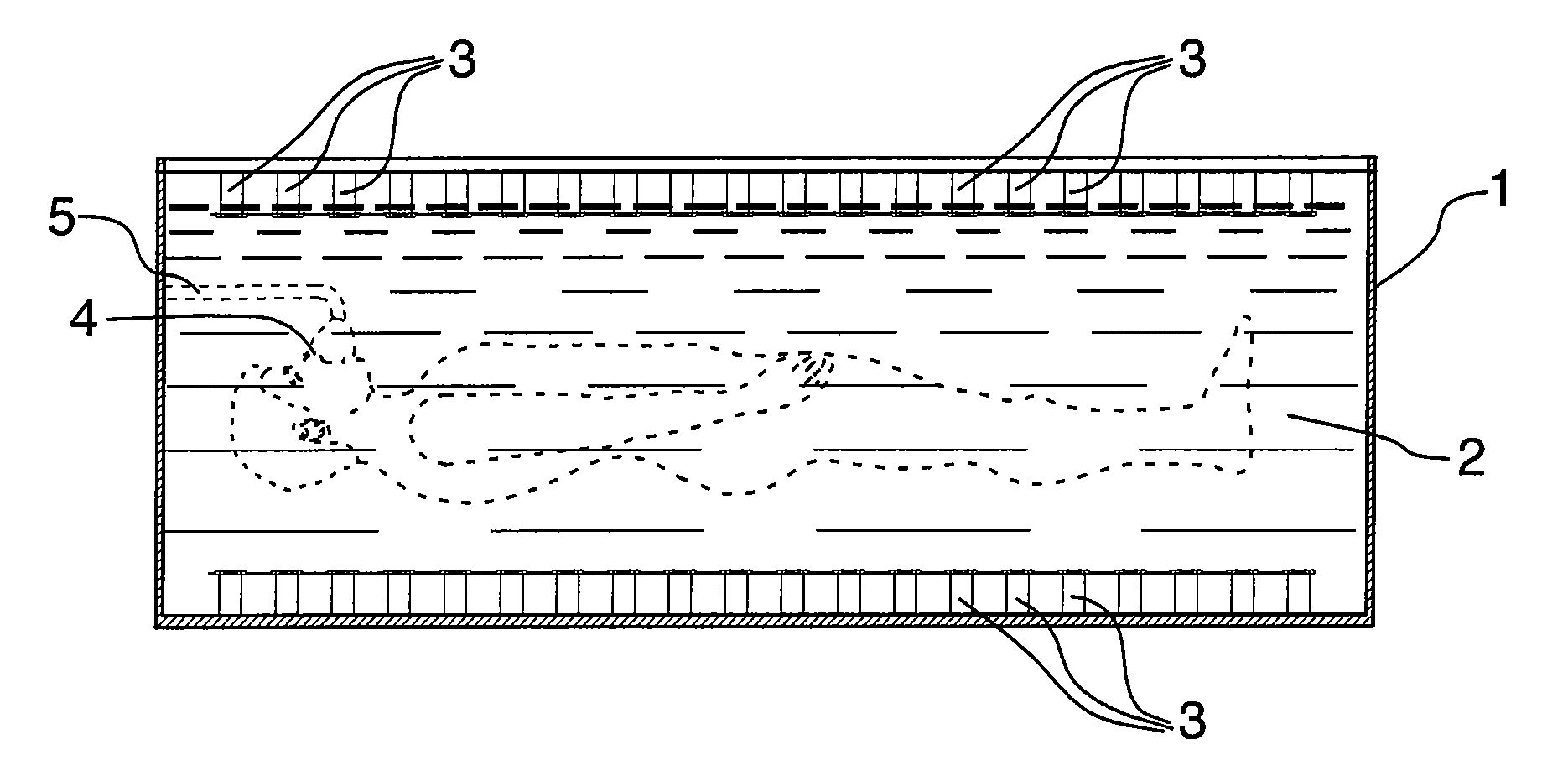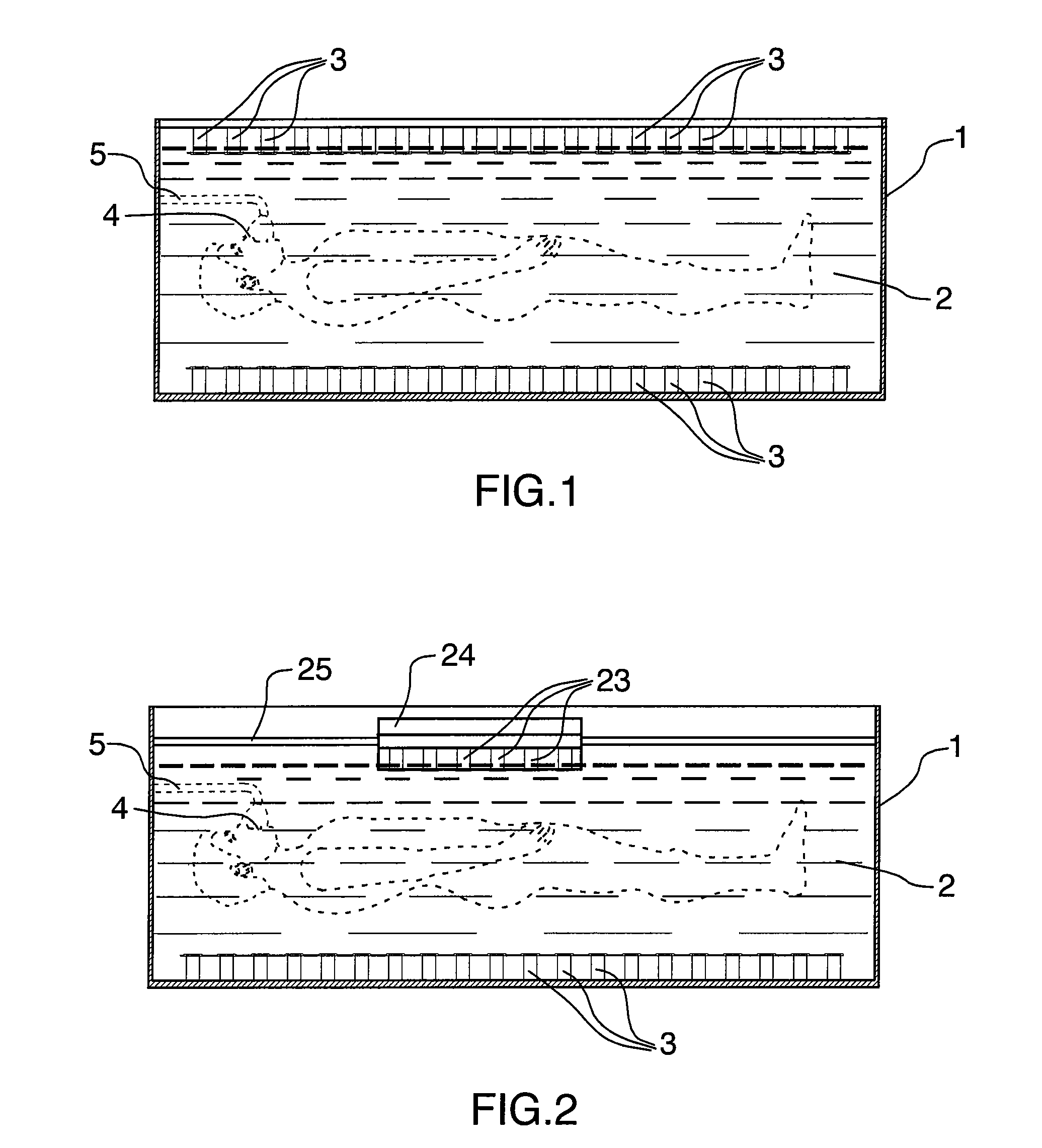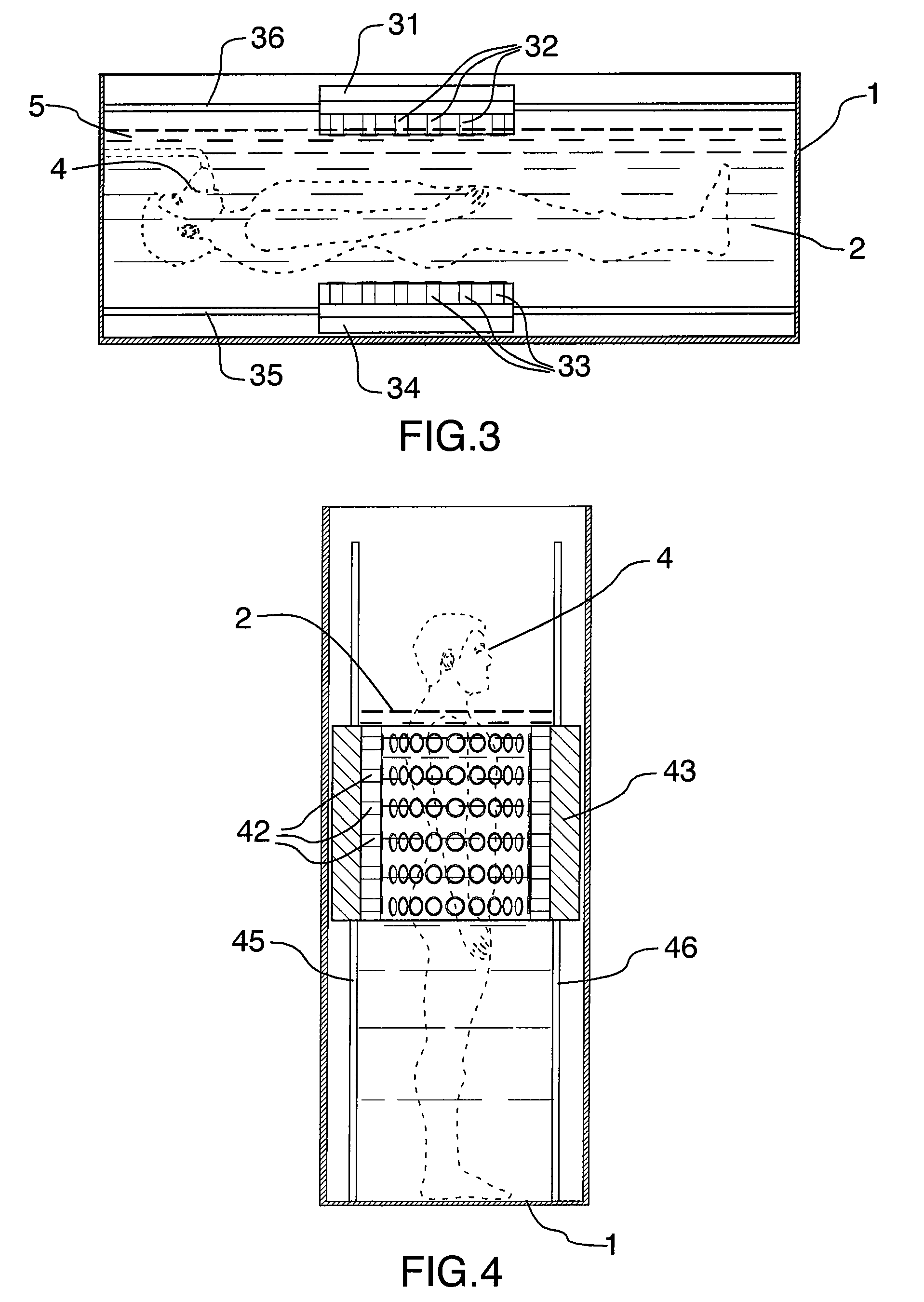System and apparatus for sonodynamic therapy
a sonodynamic therapy and system technology, applied in the field of diffusing ultrasound, can solve the problems of heat loss, attenuation of ultrasonic energy, loss of some energy,
- Summary
- Abstract
- Description
- Claims
- Application Information
AI Technical Summary
Problems solved by technology
Method used
Image
Examples
first embodiment
[0067]FIG. 1 is a schematic of the structure of a first embodiment according to the invention. The embodiment of the invention comprises a chamber 1 for accommodating a patient 4, the chamber containing a fluid 2 that transmits ultrasound, and a plurality of transducers 3.
[0068]The chamber 1 may be configured like a bath tub, an upright shower enclosure or any other container or enclosure capable of retaining fluid 2. The chamber may be composed of fiber glass material or any other material that is suitable to the application.
[0069]The plurality of transducers 3 may be positioned to ensonify all or part of the chamber 1. The plurality of transducers 3 are preferably in contact with the fluid 2 to allow for efficient transmission of diffuse ultrasound.
[0070]The patient 4 may be resting in the chamber partially or completely submerged in the fluid 2. A breathing apparatus 5 may be employed, but preferably the patient's face is not submerged, permitting the patient to breathe comfortab...
second embodiment
[0073]FIG. 2 is a schematic of the structure of a second embodiment according to the invention. The embodiment of the invention comprises a chamber 1 for accommodating a patient 4, the chamber containing a fluid 2 that transmits ultrasound, and a plurality of transducers 3, some of which are moving elements 23 attached to a motional apparatus 24 running along a guide rail 25 or other movement or guidance means. The one set of moving elements 23 may be moved to provide coverage of the entire patient 4. This configuration may be used with an open top design of chamber 1, allowing easier access of the patient to the chamber. A breathing apparatus 5 may be employed, but preferably the patient's face is not submerged, permitting the patient to breathe comfortably.
[0074]The motional apparatus in any embodiment may comprise any apparatus that provides for motion in at least one direction. In some embodiments, the motional apparatus will move in two or more directions. The motional apparatu...
third embodiment
[0075]FIG. 3 is a schematic of the structure of a third embodiment according to the invention. The embodiment of the invention comprises a chamber 1 for accommodating a patient 4, the chamber containing a fluid 2 that transmits ultrasound, and a plurality of transducers, all of which are moving elements. A first set of the moving elements 32 are attached to a first motional apparatus 31 running along a guide rail 36, or the first motional apparatus may be moved or guided using other means. A second set of the moving elements 33 are attached to a second motional apparatus 34 running along a guide rail 35 or other movement or guidance means. The two sets of moving elements may provide coverage for the entire patient.
[0076]This configuration may use more than two sets of moving elements, to provide more thorough coverage of the patient 4.
[0077]A breathing apparatus 5 may be employed, but preferably the patient's face is not submerged, permitting the patient to breathe comfortably.
PUM
 Login to View More
Login to View More Abstract
Description
Claims
Application Information
 Login to View More
Login to View More - R&D
- Intellectual Property
- Life Sciences
- Materials
- Tech Scout
- Unparalleled Data Quality
- Higher Quality Content
- 60% Fewer Hallucinations
Browse by: Latest US Patents, China's latest patents, Technical Efficacy Thesaurus, Application Domain, Technology Topic, Popular Technical Reports.
© 2025 PatSnap. All rights reserved.Legal|Privacy policy|Modern Slavery Act Transparency Statement|Sitemap|About US| Contact US: help@patsnap.com



